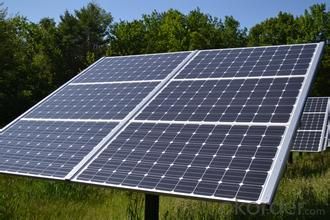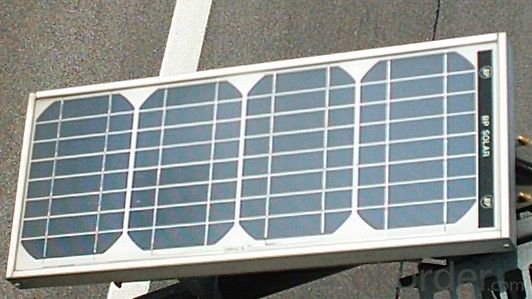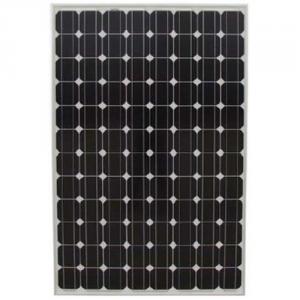Cubesat Solar Cells High Efficiency Monocrystalline PV Module Black Backboard 250W-260W
- Loading Port:
- China Main Port
- Payment Terms:
- TT or LC
- Min Order Qty:
- -
- Supply Capability:
- -
OKorder Service Pledge
OKorder Financial Service
You Might Also Like
Structure
Solar panel refers either to a photovoltaics (PV) module, a solar hot water panel, or to a set of solar photovoltaics modules electrically connected and mounted on a supporting structure. A PV module is a packaged, connected assembly of solar cells. Solar panels can be used as a component of a larger photovoltaic system to generate and supply electricity in commercial and residential applications.
Features
Nominal 20V DC for standard output.
Out standing low-light performance.
Heavy-duty anodized frames.
High transparent low-iron, tempered glass.
Rugged design to withstand high wind pressure, hail and snow load.
Aesthetic appearance.



Images


Specification



FAQ
Q:How to guarantee the quality of the products?
A:We have established the international advanced quality management system,every link from raw material to final product we have strict quality test;We resolutely put an end to unqualified products flowing into the market. At the same time, we will provide necessary follow-up service assurance.
Q:Can we visit your factory?
A:Sure,welcome at any time,seeing is believing.
Q:Which payment terms can you accept?
A:T/T,L/C,Moneygram,Paypal are available for us.
- Q: What is the difference between a solar cell and a solar panel?
- A solar cell is a single unit that converts sunlight directly into electricity, while a solar panel consists of multiple solar cells connected together to generate a higher amount of electricity.
- Q: Are solar cells durable?
- Yes, solar cells are generally durable. They are designed to withstand various environmental conditions such as heat, humidity, and extreme temperatures. Additionally, most solar cells are made with materials that have a long lifespan and are resistant to degradation. However, proper maintenance and protection are necessary to ensure their longevity.
- Q: How do solar cells perform in mountainous regions?
- Solar cells can perform well in mountainous regions, as long as they are properly installed and adjusted to maximize sunlight exposure. The high altitude and clear air in mountainous areas can actually enhance the performance of solar cells by allowing more direct sunlight to reach the panels. However, the angle at which the panels are mounted may need to be adjusted to account for the tilt of the terrain and ensure optimal sunlight absorption.
- Q: Can solar cells be used for powering electric vehicles charging stations?
- Yes, solar cells can be used to power electric vehicle charging stations. Solar panels can convert sunlight into electricity, which can then be used to charge electric vehicles. This helps to utilize renewable energy sources and reduce the carbon footprint associated with charging electric vehicles.
- Q: What is the maximum efficiency possible for a solar cell?
- The maximum efficiency possible for a solar cell is currently around 46%.
- Q: We are currently promoting our one of our solar cells seriers, which is the 156mmx156mm 6inch,2BB/3BB polycrystalline/multi solar cells,mono solar cell,made in Taiwan/Germany, please feel free to contact me if any interest.
- I am now in the process of purchasing some mono solar cells, can you send me more details of the product?
- Q: Can solar cells be used to charge electric vehicles?
- Yes, solar cells can be used to charge electric vehicles. Solar panels can be installed on the roof or other surfaces of an electric vehicle to generate electricity from sunlight. This electricity can then be used to charge the vehicle's battery, providing a renewable and sustainable source of energy.
- Q: Why are the poly Solar cell specifications is different from each other, they seem to have the different size of 125mm, 156mm, 152mm, is the 152mm's battery technology is higher than the other?
- We seldom see poly solar cell with the size of 152, because that is not really good to use.
- Q: What is the effect of wind on solar cell performance?
- The effect of wind on solar cell performance can be both positive and negative. On one hand, a gentle breeze can help cool the solar panels, preventing them from overheating and improving their efficiency. On the other hand, strong winds can cause vibrations and movement in the panels, leading to potential damage or misalignment. Therefore, while some wind can be beneficial, excessive or turbulent winds can have a detrimental impact on solar cell performance.
- Q: How are solar cells tested for quality?
- Solar cells are tested for quality through a series of rigorous evaluations and inspections. These tests typically involve measuring the electrical performance, efficiency, and durability of the cells. They are subjected to various environmental conditions, such as extreme temperatures and humidity, to ensure they can withstand different climates. Additionally, visual inspections are conducted to check for any manufacturing defects or physical damages. Overall, these quality tests help determine if the solar cells meet the required standards for optimal performance and reliability.
Send your message to us
Cubesat Solar Cells High Efficiency Monocrystalline PV Module Black Backboard 250W-260W
- Loading Port:
- China Main Port
- Payment Terms:
- TT or LC
- Min Order Qty:
- -
- Supply Capability:
- -
OKorder Service Pledge
OKorder Financial Service
Similar products
Hot products
Hot Searches
Related keywords
































